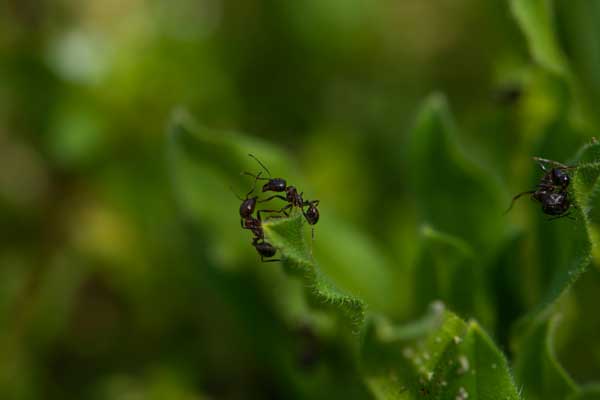Ants work smarter, not harder

[Black Ants on Green Leaves. Photo Credit to Pexels]
Ants are often overlooked in discussions of high-level intelligence, yet a recent experiment last December happened at the Weizmann Institute of Science reveals just how extraordinary these tiny insects can be.
Led by researcher Tabea Dreyer under the supervision of Prof. Ofer Feinerman, the study examined how effectively both species could navigate complex mazes while working in groups.
The research team designed mazes of varying sizes to test both human participants and Paratrechina longicornis, a species of ant measuring just 3 mm in length.
Both species attempted the challenges under three conditions: individually, in small groups of approximately seven, and in larger groups consisting of 80 ants or 26 humans.
To create comparable conditions, human participants were blindfolded and prevented from speaking during some trials.
They were equipped with specialized sensor-fitted handles to measure pulling force, mimicking how ants grip and transport objects.
While individual humans consistently outperformed ants due to their cognitive advantages, the results shifted dramatically in group scenarios.
When working in larger numbers, ant colonies demonstrated exceptional collective memory and coordination.
In contrast, human groups, when limited to ant-like communication, performed worse than individuals attempting the same tasks.
“An ant colony is actually a family,” explains Feinerman, highlighting how ants prioritize collective benefits through cooperation rather than competition.
This cooperative approach has earned ant colonies the designation of “super-organisms,” as they operate as single entities to achieve common goals.
The study builds upon previous research into ant tail organization, foraging techniques, and nest dynamics, illustrating how ant collectives communicate and coordinate in ways that can surpass human teams.
This research provides valuable insights into the social structure of ant colonies.
These insect societies are female dominated, centered around one or several reproductive individuals, commonly a queen ant, or sometimes an egg-laying worker.
A queen mates briefly with a short-lived male, storing his sperm in a specialized pouch called a spermatheca to sustain egg production.
Different ant species demonstrate various manifestations of this cooperative behavior.
Oecophylla Weaver Ants, which inhabit tropical treetops, builds elaborate nests by using larval silk to bind leaves together.
Meanwhile, Temnothorax Acorn Ants maintain multi-generational nests where tasks are divided based on developmental stages and age with roles adapting to colony needs.
Therefore, the example of these tiny insects serves as a vivid reminder of just how powerful a social system can be when it places cooperation and the collective good above all else.
When danger appears, the entire community perceives it as a shared threat and response as one unit.
Each member treats others as sisters, maintaining strong recognition within the colony.
This research reveals how powerful a social system can become when it emphasizes cooperation and collective welfare above individual achievements.
The findings suggest that there may be valuable lessons to learn from these small but extraordinary organized insects about effective group coordination and problem-solving.

- Seunghyun Kim / Grade 11
- Trinity College School

![THE HERALD STUDENT REPORTERS [US]](/assets/images/logo_student_us.png)
![THE HERALD STUDENT REPORTERS [Canada]](/assets/images/logo_student_ca.png)
